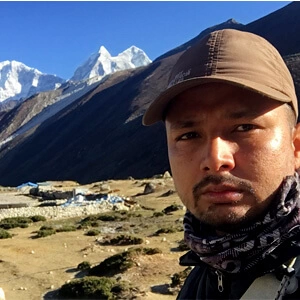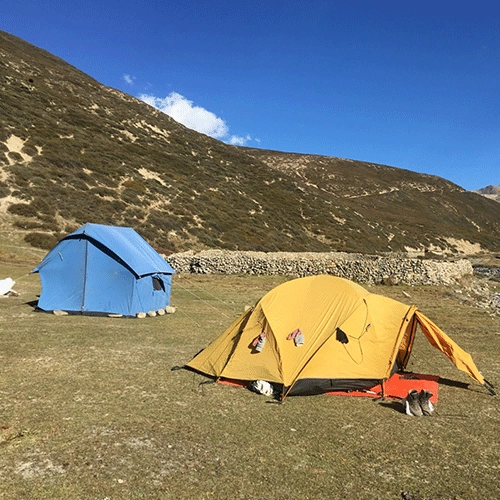Overview of Langtang Valley Trek
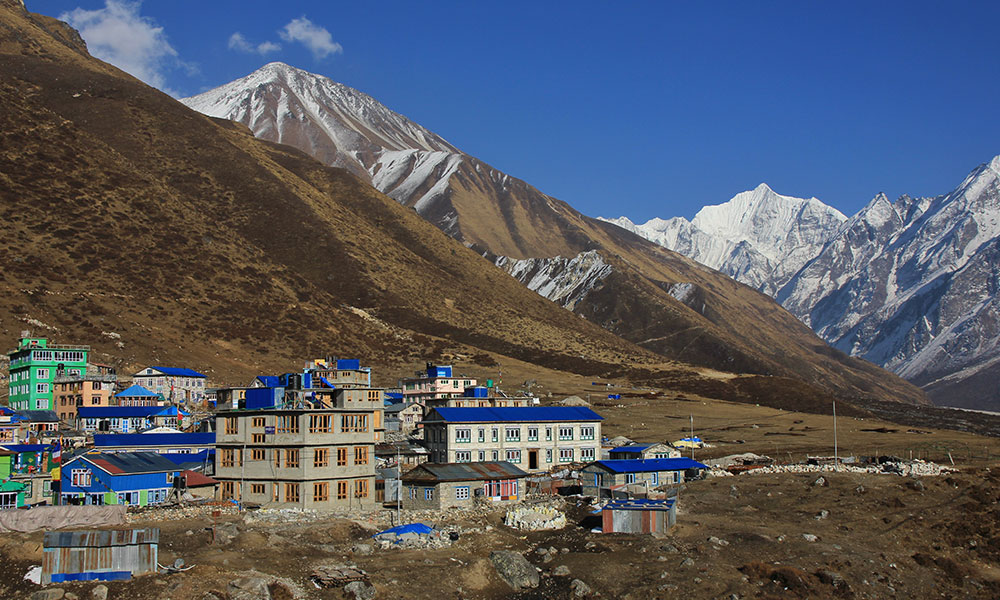
Langtang Valley Trek begins the day after you arrive at Tribhuwan International Airport. This trek is about 9 days packed with majestic sights, cultural exploration, and marvelous experiences. Before our trekking begins, you shall enjoy the beauty of Kathmandu Valley and its world heritage sites like Bhaktapur Durbar Square, Patan Durbar Square, and Pashupatinath. These places are wonderful to visit as they provide insights into ancient architecture, monuments, and traditional customs. Visit to museums in such heritage sites shall enhance your lively journey inside Kathmandu Valley.
After your complete exploration of Kathmandu Valley, we start our Langtang Valley Trek the next day. As Langtang Village is located in the neighboring district of Kathmandu, Rasuwa district of Nepal, we depart with a drive-through leaving Kathmandu Valley. Drive-through for around 3-4 hours can be monotonous, but sightseeing high hills, divine forests, and gushing waterfalls along the way alongside the soaring Trishuli River shall keep you occupied. On top of that, you shall be entertained by local settlements and sightseeing of wild animals, considering the case of luck. Our drive-through destination is Syabrubesi, which is in the northwest direction of Kathmandu Valley.
On the way to Syabrubesi, you shall enjoy the local ambiance of the Nepali lifestyle. We stay at Syabrubesi for our night after exploring local villages. The next day, after our early morning breakfast, we begin our real trek. After leaving the village, we go from crossing the Bhotekoshi River over a suspension bridge to lush forests. Our destination for the day is the Lama Hotel, and the trek goes through trails and suspension bridges over Langtang Khola. We stop for a short break at Bamboo, a scenic spot to view magical glimpses of Langtang Valley and surrounding mountains on a clear day. After about 5-6 hours of trekking, we reach Lama Hotel, elevating around 800-900m in altitude.
The next day, the trek continues towards Langtang Village. Lama Hotel serves quality views, and relishing those mountainous sights, we walk towards dense alpine forests. After a few hours of trekking through trails of forests, we reach Ghoda Tabala where the majestic view of Mt. Langtang Lirung is visible along with plunging waterfalls. We stop at Langtang Village for the night and experience local cultures and Himalayan settlements.
Our journey continues uphill the next day towards Kyanjin Gumba. By the end of the day, we’ll be ascending about 3845m in altitude. To avoid altitude sickness, today, we’ll be proceeding at a safe pace. The challenging route drives fun and thrill within, and the destination is truly magnificent. You shall relish the greenery of Kyanjin Valley along with magical sightseeing of stunning landscapes and waterfalls.
After delicious Himalayan foods and bakery, we’ll move towards Kyanjin Ri the following day. The trek is around 3-4 hours and is at an altitude of about 4,773m. From here, the magical cloudless views of the entire Langtang Valley, mountainous peaks, spectacular Gosaikunda, and 360 views of landscapes shall leave you stunned. After clicking some pictures and holding onto memories of beautiful sights, we travel back to Ghoda Tabala for our night.
As our trek is leaning towards an end, the next day, we trek back to Syabrubesi and then leave for Kathmandu. While the Langtang Village will long for you, the memories and stunning experiences you had shall live forever.
Highlights of Langtang Valley Trek
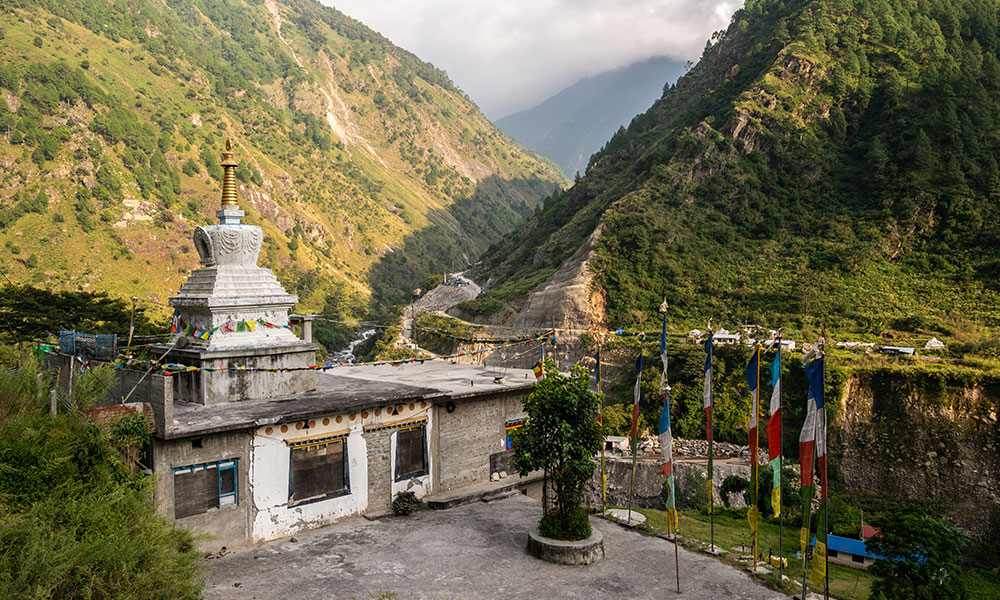
- Marvelous views of Langtang Lirung
- Stunning views of landscape, waterfalls, rivers, glaciers and lakes
- Glimpses of Gosai Kunda, Bhairav Kunda, and Saraswati Kunda
- Mountainous lifestyle and numerous monasteries
- Langtang National Park
- Glimpses of Ganesh Himal, Langtang Ri, and Dorje Lakpa
- Diverse flora and fauna
- Sightseeing wild species like Red Panda, Himalayan Tahr, Snow Leopard, musk deer, and more than 250 species of bird
- The highest point of the trek, Kyanji Ri (4,773m)
- Tibetan culture and warm hospitality
Why Langtang Valley Trek?

Mesmerizing View
Langtang Valley is comprised of numerous majestic sights. From the start of Langtang Valley Trek, you’ll be accessed to magical glimpses of high rugged Himalayas, meandering rivers, stunning landscapes, and cascading waterfalls. Furthermore, the highest point of the trek, i.e. Kyanjin Ri, furnishes this trek with a spectacular panoramic vision of Himalayan landscapes and Gosaikunda, located in the heart of the mountain range. Also, this place bestows you with a glimpse of Langtang Lirung, Langtang Ri, Ganesh Himal, and Dorje Lakpa.
Moreover, Planning the trek at a suitable time enhances the view by double. Under clear sky, the lake dances creating ripples and shines reflecting the blue sky while the mountainous peaks glancing the sunlight through its surface shall leave you stunned. On the way to Langtang Village, you’ll be passing through rhododendrons and alpine forests along with soaring rivers that enhance your experiences from the beginning. This trek provides you with magical sights of glaciers and Yala (5500 m) and Naya Kanga (5846 m) mountainous peaks. Additionally, this trek offers you numerous mountain climbing and other trekking like Gosaikunda Trek, Helambu Trek, and Tamang Heritage Trek.
Langtang National Park
Langtang National Park, established in 1976, is rich in flora and fauna, and the sights of Himalayan Tahr, Red Panda, yak, blue-sheep, musk-deer, and Snow Leopard make this trek alluring. On top of that, greenery vegetation and more than 200 species of birds, including vultures and eagles add beauty to this region. This region is rich in plant species as it has a series of lush forests of rhododendrons along with alpine and maple trees. Langtang National Park encloses numerous trekking routes, Langtang Valley, Helambu trek, and Gosaikunda Lake. The park also has access to offering moderate to challenging treks to individual trekkers. This also gives access to the majestic view of five lakes (Paanch Pokhari), Langshisa glacier, and Ganja La Pass.
Kyanjin Ri
Kyanjin Ri is the highest point of Langtang Valley Trek, with an altitude of 4,773m. Trekking to Kyanjin Ri should be at a slow pace as the rapid ascending in altitude can lead to altitude sickness. While the route can be thrilling and challenging, Kyanjin Ri offers breathtaking views of the splendor of the mountain and surrounding landscapes. On a clear and bright day, Kyanjin Ri offers a wonderful sunrise striking the snow surface. While the route takes you through steep ridges and slippery trails, the outcome is outstanding.
Tibetan Culture and Warm Hospitality
Langtang region is rich in culture and traditions. Here, both Hinduism and Buddhism can be seen as the region occupies both Nepali and Tibetan. Langtang Village has a lot to offer when it comes to cultural exchange. Tibetan culture is widely famous for its Buddhist practices, monasteries, and visual arts. There are numerous monasteries in the Langtang region that give insights into spiritual importance and ancient ornaments. The presence of monastic architecture, distinct styles of clothing, and paintings (thang-ka) gives your trek a new experience.
Tibetan people follow different calendars and their new year starts with Lhosar, which lies in February or March. Planning your trek to Langtang Village during spring will drive you through the festive atmosphere and local traditions. People in the upper region are kind and welcome you warm-heartedly to any local practices or customs. They also perform numerous traditional dances along with local music, which is fun to watch and blend in. Ultimately, Trek to Langtang Valley provides you with innumerable and unforgettable experiences.
Gosaikunda Trek
Another popular sightseeing place of Langtang Valley Trek is Gosaikunda. Gosaikunda is truly magnificent and is a pure holy Lake. It has a lot of importance in Hinduism and furnishes the journey with a wonderful view. It is said that the holy lake connects itself to the Lord Shiva, the god of destruction. According to belief, the lake was formed when Lord Shiva pierced the mountain with his trident to quench his burning throat after he devoured the poison. There is another belief that says that only a pure soul can truly see the reflection of Lord Shiva in the Lake. Gosaikunda is located in the lap of a stunning mountainous landscape and offers a magical scene. While the Langtang trek gives you a glimpse of Gosaikunda, to observe and visit the lake closely, consider adding Gosaikunda Trek to your Langtang Valley Trek. The sights are truly awesome with a once-in-a-lifetime experience.
Less crowded
After the 2015 earthquake hit Langtang village, many people died, and the entire village collapsed. Since then, Langtang Village has had a low number of visitors and trekkers like before. Though construction is done and settlements are back like before with numerous villagers, it still hinders receiving tourism as before the earthquake. Therefore, being less crowded, this trek offers you close interaction with nature in a peaceful manner. There is no rush and you get all the facilities available at ease without any difficulties. With fewer people traveling, you can enhance your relationship with local villagers and delve into their culture and monasteries. Moreover, the breathtaking view of the mountain range while you’re in its lap alone feels greater than any other feeling.
Best Seasons for Langtang Valley Trek
The beauty of the Langtang Valley is staggering and lasts all season. While the beauty pertains throughout the year, your experience of Langtang Valley Trek is enhanced if you decide to trek during suitable climatic conditions. Besides just the magical view of gigantic high mountains, beautiful lakes, and surrounding landscape, suitable climatic conditions ease and smooth your journey. The best season for you to consider Langtang Valley Trek is during Spring (March to May) and Autumn season (September to November). During this time, the temperature is mild, with less rainfall and snowfall. This reduces any risk of landslides and floods and you shall trek effortlessly as the trails won’t be slippery and muddy. On top of that, on a clear, bright sky, the stunning view of the mountain range looks magnificent.
The climate during spring accommodates blooming rhododendrons with more than 30 species. The atmosphere is different during this season, and with festive occasions and cultural practices, you shall relish the beauty of Langtang Valley. Moreover, you shall experience the beauty of the mountainous lifestyle, try delicious cuisines, and see farms and agriculture, which ultimately boosts your trekking experience. Therefore, if you are considering the trek to Langtang Valley, deciding during a stable time with no issues in climatic conditions should be the foremost priority. Without any delay, you shall experience a transparent, majestic view of the expansive mountain range with no issues and safety.
***Note: Even if you’re planning your trek during Spring or Autumn, it is necessary to be certain of the fickling mountain climate and pack accordingly***
Langtang Valley Economy
Langtang Valley is rich in natural beauty and cultural diversity. As a result, this boosts the number of tourists from all around the world. Enthusiastic trekkers and adventure explorers find Langtang Valley Trek fabulous and thrilling. Boosting tourism has been one of the major economic sources of the village. Tourism in the Langtang village generated revenue through the Hotel Industry, Guide services, Pottery, and Teahouses. Besides the flow of revenue through tourism, villagers are involved in local farming, agriculture, and animal husbandry. These serve as additional sources to their economy while Cheese Factory still pertains to distributing in a large quantity.
Food and Accommodation in Langtang Valley Trek
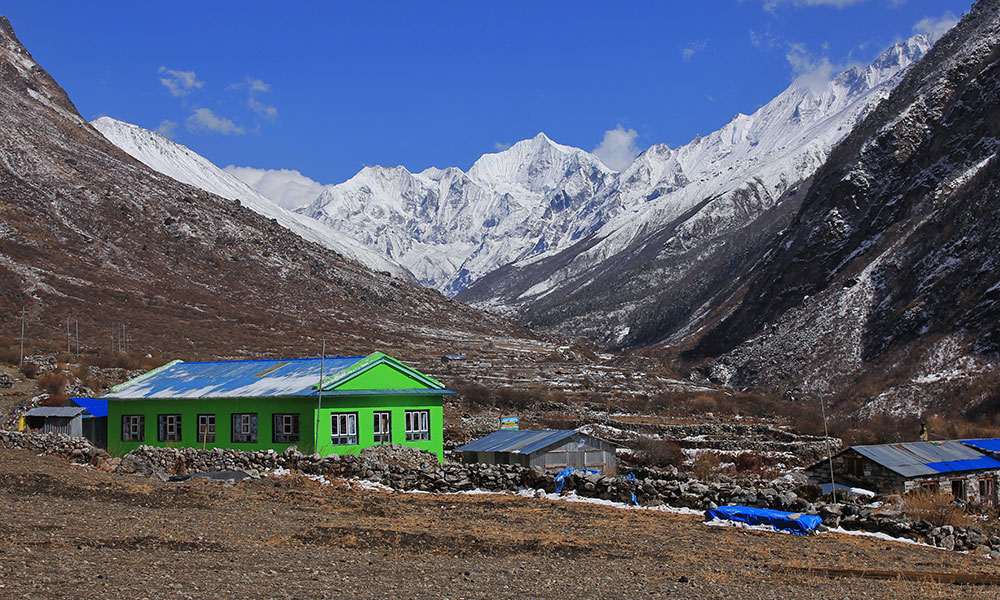
While the Langtang Village lies in the remote area being deprived of standard city facilities, it does not lack in providing basic food and housing services to international and national travellers. Langtang Village welcomes people warm-heartedly from all parts of the world to relish their natural sights, distinguished culture and various cuisines.
Langtang village is on standby to provide you with delicious food and warm nights. There is no compromising in terms of services, and we treat you with a room with an attached toilet, warm shower, comfy bed and cushioning pillow. The accommodating facilities in the upper Himalayan region are mainly teahouses, and they present you with varieties of food items. Local Nepali food, Daal Bhaat, is available, while different dishes like Momo, Thukpa, Roti, Curry, and Gundruk are also available.
Langtang 2015 Earthquake
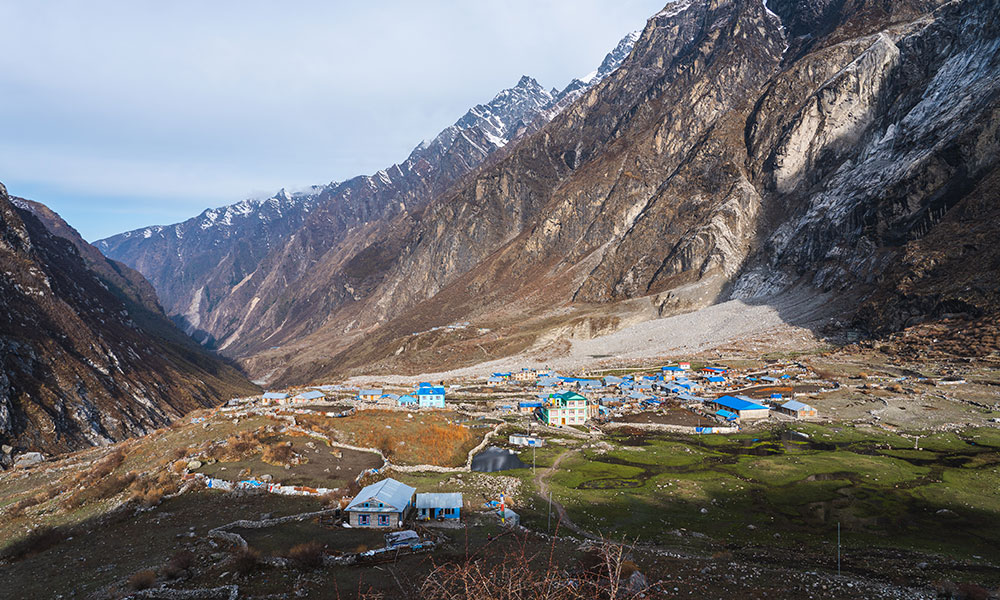
Although the epicenter was Barpak, the 2015 earthquake influenced badly to Langtang Village. On April 25, 2015, at 11:56 am, the blissful moments of beautiful Langtang Village came to an end. Except for one house, the whole town was wiped out with the killing of 310 people. Out of 310 deaths, 176 were local residents, 80 were foreigners, and 10 were army personnel. More than 100 bodies were never discovered. The village and villagers couldn’t stand against the 7.8 magnitude Earthquake. The major hit was from the following Avalanche after an earthquake. The whole village shook and the impact even ranges neighboring villages.
The day before such a huge disaster, locals were engaged in celebrating their Ghawa festivals. Villagers gathered and sang and danced and performed their local traditions. On the day, some were sleeping, many were engaged in their daily work, and some were heading for trekking and their happiness was taken away by such disaster along with their entire village.
Some survived, and the survivors were rescued through helicopter and taken to Golden Gumba near Swayambhunath, Kathmandu. After more than a month, Langtangpas returned to their homeland. With the support of NGOs, INGO, and many other organizations, the village was rebuilt. Many people, students, and villagers volunteered to develop the village again. The large number of construction was finished within a year, and Langtangpas started to smile again. Along with the village, Kyanjin Gompa and the cheese factory were rebuilt as well. People started back to their lives, smiling, though the loss they had was unmeasurable.
Now, according to the research, Langtang village is standing and flourishing again like it used to before the 2015 earthquake. Along with that, trekking to Langtang Region is open and declared safe. There are preventive measures drawn carefully in case of any calamities.
You may also like:






